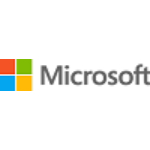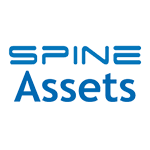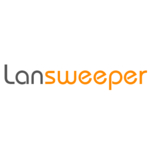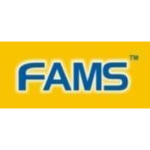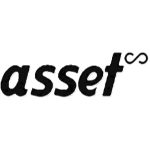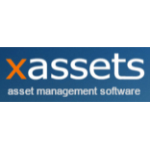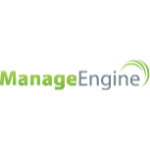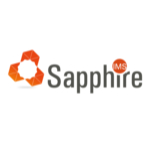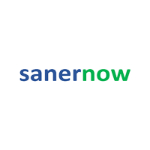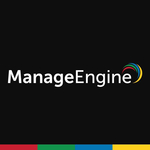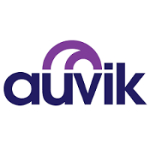
TechnologyCounter provides genuine, unbiased real user reviews to help buyers make informed decisions. We may earn a referral fee when you purchase through our links, at no extra cost to you.
List of 15 Best Asset Management Software
Showing 1 - 15 of 268 products
Auvik
Software by Auvik
Auvik is a network management tool designed to simplify and streamline the complexities of IT infrastructure management. With its intuitive interface features, Auvik helps businesses effectively monitor, troubleshoot, and secure their networks for ma...Read Auvik Reviews
Microsoft Ams is a solution designed to streamline and enhance your business operations. With a wide range of features and tools, Microsoft Ams empowers organizations to work smarter and more efficiently. Say goodbye to tedious tasks and hello to inc...Read Microsoft Ams Reviews
Spine Assets is very comprehensive, flexible and user-friendly Fixed Assets Management Software to manage depreciation accounting keeping in view the requirements of the India Companies Act, Income Tax Act as well as Management Act...Read Spine Assets Reviews
Lansweeper simplifies your IT asset management by providing a powerful, user-friendly solution that offers detailed insights into your network devices and software. With Lansweeper, you can effortlessly track and manage your IT assets, ensuring optim...Read Lansweeper Reviews
Freshservice is a popular cloud-based solution for ITSM (IT Service Management) and ITIL Service Desk. It offers a seamless user experience, combined with advanced capabilities for Ticketing and Asset Management. With a customer base of over 20000,...Read Freshservice Reviews
Thomson FAMS is an innovative software designed to streamline and optimize your facility management processes. With its user-friendly interface features, Thomson FAMS is your all-in-one solution for efficient and organized facility management. Say go...Read Thomson FAMS Reviews
Asset Infinity is a solution for managing your organizations assets effortlessly. Designed to streamline asset tracking and maintenance processes, Asset Infinity offers a user-friendly interface and powerful features for maximum efficiency. Say goodb...Read Asset Infinity Reviews
xAssets is a asset management software designed to simplify and streamline the management of physical and digital assets for businesses of all sizes. With its user-friendly interface features, xAssets allows companies to effectively track and manage...Read xAssets Reviews
BMC Software is a leading provider of innovative IT solutions for businesses of all sizes. With a focus on simplifying and streamlining processes, their software offerings empower companies to optimize their IT environments and drive digital transfor...Read BMC Software Reviews
Horizon FMS is a financial management software designed to streamline and simplify business operations. With its user-friendly interface and powerful features, it empowers companies of all sizes to effectively manage their finances and make informed...Read Horizon FMS Reviews
AssetExplorer is a powerful ITAM tool that enables IT managers to effortlessly gain visibility on and control over their IT assets across the enterprise. It offers hardware and software asset discovery and inventory management, custom workflows to au...Read ManageEngine AssetExplorer Reviews
SapphireIMS is a leading IT operations and service management software that offers a complete solution for managing and monitoring IT assets, applications, and infrastructure. With its user-friendly interface features, SapphireIMS helps organizations...Read SapphireIMS Reviews
SanerNow AE, is a solution for all your business needs. With its advanced features and user-friendly interface, SanerNow AE makes managing your projects and operations a breeze. Streamline your workflows, increase efficiency, and elevate your company...Read SanerNow AE Reviews
EZOfficeInventory is a complete solution to efficiently manage your organizations assets. With its user-friendly interface and powerful features, EZOfficeInventory simplifies inventory tracking and streamlines asset management processes. Say goodbye...Read EZOfficeInventory Reviews
ServiceDesk Plus is an AI-driven Unified Service Management platform, built to streamline and automate service delivery operations for both IT and non-IT departments, through visual workflows, predictive and generative AI capabilities, and out-of-the...Read ManageEngine ServiceDesk Plus Reviews
- What is Asset Management Software?
- Top Reasons Why Businesses Need Asset Management Software?
- What Are the Top Key Features of Asset Management Software?
- Types of Asset Management Software for Different Industries?
- Steps to Choosing the Right Asset Management Software
- What Are the Technology Trends for Best Asset Management Software?
- What Are the Deployment Options for Asset Management Software?
What is Asset Management Software?
Asset management software is a comprehensive solution for businesses to efficiently track, manage, and optimize their assets. It provides a centralized platform for monitoring both tangible and intangible assets, enabling organizations to gain real-time visibility into asset location, status, and usage. Through features like asset tracking, inventory management, and maintenance scheduling, businesses can streamline operations, minimize costs, and maximize the lifespan of their assets.
Asset management software also offers robust reporting and analytics capabilities, allowing stakeholders to derive actionable insights and make informed decisions to improve asset performance and compliance. By automating manual processes and leveraging data-driven insights, organizations can enhance productivity, reduce downtime, and stay competitive in today's rapidly evolving business environment.
Top Reasons Why Businesses Need Asset Management Software?
Here are the top reasons why businesses across various industries are embracing asset management software:
1. Enhanced Visibility and Control: Asset management software provides comprehensive visibility into the entire lifecycle of assets, from procurement to retirement. Businesses can effortlessly track asset location, status, usage, and maintenance history in real time, empowering them with greater control over their valuable resources.
2. Optimal Resource Utilization: By gaining insights into asset utilization patterns, businesses can optimize resource allocation and minimize underutilization or redundancy. This ensures that assets are deployed efficiently, reducing operational costs and maximizing ROI.
3. Improved Compliance and Risk Management: Regulatory compliance and risk management are critical concerns for businesses operating in highly regulated industries. Asset management software helps organizations maintain compliance with industry standards and regulations while proactively identifying and addressing potential risks, such as equipment failures or security breaches.
4. Streamlined Maintenance Processes: Preventive maintenance is key to prolonging asset lifespan and minimizing unplanned downtime. Asset management software enables automated maintenance scheduling, alerts for servicing requirements, and tracking of maintenance history, ensuring assets are consistently maintained at peak performance levels.
5. Accurate Financial Reporting: With asset management software, businesses can accurately track asset depreciation, valuation, and financial performance. This facilitates precise financial reporting, asset valuation, and compliance with accounting standards, ultimately enhancing transparency and accountability.
6. Scalability and Adaptability: Whether a business is a small startup or a multinational corporation, asset management software offers scalability to accommodate growth and adaptability to evolving business needs. It can seamlessly integrate with existing systems and technologies, providing a future-proof solution that grows with the organization.
7. Enhanced Decision-Making: Data-driven insights generated by asset management software empower businesses to make informed decisions regarding asset acquisition, disposition, and optimization strategies. By leveraging actionable intelligence, businesses can align asset management practices with overarching business objectives, driving strategic growth initiatives.
8. Increased Productivity and Efficiency: By automating manual asset management processes, businesses can eliminate time-consuming tasks and free up resources for more value-added activities. This boosts productivity, reduces administrative burdens, and fosters a culture of innovation and continuous improvement.
9. Greater Customer Satisfaction: Reliable assets are essential for delivering high-quality products and services to customers. Asset management software ensures that businesses have the right assets, in the right condition, at the right time, enhancing operational efficiency and customer satisfaction.
10. Competitive Advantage: In today's fast-paced business environment, gaining a competitive edge is essential for long-term success. By leveraging asset management software to optimize asset performance, minimize costs, and mitigate risks, businesses can differentiate themselves from competitors and drive sustainable growth.
What Are the Top Key Features of Asset Management Software?
1. Centralized Asset Repository:
Efficient asset management software offers a centralized repository where all crucial asset information is stored. This includes details such as asset location, ownership, maintenance history, and depreciation schedules. Having a single source of truth streamlines asset tracking and eliminates data silos.
2. Barcode and RFID Integration:
Advanced asset management solutions integrate with barcode and RFID technology, allowing for seamless asset identification and tracking. This feature enables users to quickly scan assets, update their status, and view their movement history in real time, enhancing overall visibility and control.
3. Customizable Dashboards and Reports:
Top-tier asset management software provides customizable dashboards and reporting tools tailored to the specific needs of users. Administrators can create personalized reports to track key performance indicators (KPIs), monitor asset utilization, and analyze maintenance trends, empowering informed decision-making.
4. Asset Lifecycle Management:
Asset management software facilitates comprehensive asset lifecycle management, from procurement to disposal. It automates workflows for asset acquisition, allocation, maintenance scheduling, and retirement, optimizing resource utilization and prolonging asset lifespan while ensuring compliance with regulations.
5. Preventive Maintenance Scheduling:
Effective asset management solutions include preventive maintenance scheduling features that enable users to proactively schedule and track maintenance tasks based on predefined criteria such as time, usage, or condition. By identifying potential issues early on, organizations can minimize downtime and extend asset longevity.
6. Mobile Accessibility:
Modern asset management software offers mobile accessibility, allowing users to access asset information and perform tasks remotely using smartphones or tablets. This feature enhances flexibility and productivity by enabling field technicians to update asset data, capture images, and submit service requests on the go.
7. Integration Capabilities:
Integration with other business systems such as ERP, CMMS, and financial software is a key feature of asset management solutions. Seamless integration streamlines data exchange between different departments eliminates duplicate data entry, and ensures data consistency across the organization.
8. Role-based Access Control:
Robust asset management software incorporates role-based access control mechanisms to restrict user access to sensitive asset information based on their roles and responsibilities within the organization. This feature enhances data security and confidentiality while promoting accountability and compliance.
9. Scalability and Flexibility:
Scalability and flexibility are essential features of asset management software, allowing organizations to accommodate growth and adapt to changing business requirements over time. Whether managing a small inventory or a vast asset portfolio, the software should be scalable to meet evolving needs without compromising performance.
10. Regulatory Compliance:
Compliance with industry regulations and standards is a critical feature of asset management software, particularly in highly regulated sectors such as healthcare, finance, and manufacturing. The software should support regulatory requirements such as Sarbanes-Oxley (SOX), ISO 55000, and FDA guidelines, helping organizations avoid penalties and reputational damage.
Types of Asset Management Software for Different Industries?
Healthcare Sector:
Asset management software for healthcare focuses on tracking medical equipment, pharmaceuticals, and supplies. It integrates with electronic health records (EHR) systems to ensure seamless inventory management and regulatory compliance.
Manufacturing Industry:
In manufacturing, asset management software helps monitor machinery, tools, and raw materials across the production line. It often includes predictive maintenance features to optimize equipment uptime and reduce downtime.
Construction Field:
Asset management software for construction companies streamlines equipment tracking, maintenance schedules, and project resource allocation. It offers features like GPS tracking for heavy machinery and inventory management for construction materials.
Transportation and Logistics:
This sector relies on asset management software to track vehicles, containers, and cargo in real-time. It optimizes route planning, monitors fuel consumption, and enhances fleet maintenance to ensure efficient operations.
Financial Institutions:
Asset management software in finance manages investment portfolios, tracks financial instruments, and conducts risk analysis. It provides tools for portfolio diversification, performance tracking, and compliance with regulatory requirements.
Retail Sector:
Asset management software for retail chains monitors inventory levels, tracks product sales, and manages store assets such as POS systems and display fixtures. It helps retailers optimize stocking levels and reduce stockouts.
Energy and Utilities:
In this industry, asset management software oversees the maintenance of power plants, pipelines, and distribution networks. It utilizes predictive analytics to identify potential equipment failures and optimize energy production.
Government and Public Sector:
Asset management software in government agencies tracks infrastructure assets like roads, bridges, and public buildings. It facilitates maintenance scheduling, budget allocation, and regulatory compliance.
Education Institutions:
Asset management software for schools and universities manages IT assets, educational materials, and facilities equipment. It helps educational institutions optimize resource allocation and track assets across multiple campuses.
Hospitality Industry:
In hotels and resorts, asset management software oversees the maintenance of guest rooms, facilities, and amenities. It tracks inventory levels of linens, toiletries, and kitchen supplies to ensure a seamless guest experience.
Steps to Choosing the Right Asset Management Software
Choosing the right asset management software can streamline operations, optimize asset utilization, and enhance overall efficiency in an organization. Here are key steps to follow when selecting the ideal asset management software for your needs:
Assess Your Needs:
- Identify Goals: Determine what you want to achieve with asset management software, such as improved tracking, maintenance management, or cost reduction.
- Audit Current Processes: Review your current asset management processes to identify pain points and areas for improvement.
Define Key Features:
- Must-Have Features: List essential features like asset tracking, inventory management, depreciation calculation, and reporting capabilities.
- Desirable Features: Consider additional features that could enhance efficiency, such as mobile access, integrations with other systems, and customizable workflows.
Research Vendors:
- Create a Shortlist: Based on your feature list, research and compile a list of potential software providers.
- Read Reviews and Case Studies: Look at user reviews, testimonials, and case studies to gauge the software’s performance and customer satisfaction.
Evaluate Costs:
- Consider Pricing Models: Asset management software may have different pricing models such as per asset, per user, or flat monthly fees. Determine which model fits your budget and scale.
- Total Cost of Ownership: Include costs for implementation, training, support, and any necessary hardware in your budget considerations.
Request Demonstrations and Trials:
- Demo Products: Schedule demonstrations with vendors to see the software in action and assess its ease of use and functionality.
- Free Trials: If available, take advantage of free trials to test the software in your own environment.
Check Scalability and Integration:
- Future-Proofing: Ensure the software can scale with your business and handle increasing asset counts or additional locations.
- Compatibility: Verify that the software integrates seamlessly with other tools you use, such as ERP systems or financial software.
Evaluate Support and Vendor Stability:
- Support Services: Consider the level of customer support provided, including availability, responsiveness, and resources like training materials.
- Vendor Reputation: Research the vendor’s stability and reputation in the market to ensure they are reliable and will be around to offer long-term support.
Make a Decision:
- Gather Feedback: Include feedback from stakeholders who will use the software regularly.
- Weigh Options: Balance functionality, cost, and support to choose the software that best meets your needs.
Plan Implementation:
- Develop an Implementation Plan: Outline steps for deployment, data migration, training, and go-live.
- Set Success Metrics: Establish metrics to evaluate the software’s impact on your asset management efficiency.
What Are the Technology Trends for Best Asset Management Software?
Here are some of the key technology trends that are shaping the best asset management software today:
1. Cloud-Based Solutions:
Cloud technology has become a standard for asset management software due to its scalability, remote accessibility, and lower upfront costs. Cloud-based systems facilitate real-time data updates and accessibility from any device with an internet connection, enhancing collaboration across teams and locations.
2. Internet of Things (IoT) Integration:
The integration of IoT technology with asset management software allows for real-time tracking and monitoring of assets. Sensors and smart devices can automatically update the condition, location, and usage data directly into the asset management system, enabling predictive maintenance and efficient asset utilization.
3. Artificial Intelligence and Machine Learning:
AI and machine learning are increasingly being integrated into asset management solutions to enhance predictive analytics. These technologies can predict equipment failures, optimize maintenance schedules, and analyze patterns to improve asset lifecycle management.
4. Blockchain Technology:
Although still in its early stages in asset management, blockchain can offer enhanced security and transparency for asset transactions. It can be used to create tamper-proof records of asset history, maintenance, and ownership changes, which is particularly useful in sectors where asset provenance is crucial.
5. Mobile Accessibility:
Mobile applications for asset management are becoming more prevalent, offering on-the-go access to asset data and management tools. This is particularly useful for teams that operate across multiple sites or need to access information remotely.
6. Augmented Reality (AR) and Virtual Reality (VR):
AR and VR technologies are being explored for their potential in asset management, particularly in training and maintenance. For example, using AR to overlay repair instructions on a piece of equipment during maintenance tasks can reduce errors and improve efficiency.
7. Advanced Analytics and Reporting:
Enhanced analytics tools are becoming a standard feature of asset management software, providing detailed insights into asset performance, utilization rates, and lifecycle costs. These analytics help in making data-driven decisions to optimize asset management strategies.
8. Sustainability and ESG Integration:
As businesses increasingly focus on sustainability, asset management software is adapting to include features that help monitor and report on environmental, social, and governance (ESG) factors. This can include tracking energy usage, carbon emissions, and other sustainability metrics.
9. Cybersecurity Enhancements:
With the increasing digitization of asset management, cybersecurity is a growing concern. New software is being designed with robust security features to protect sensitive asset data from cyber threats.
10. Customization and Flexibility:
Software vendors are offering more customizable solutions that can be tailored to specific industry needs or business processes. This flexibility allows organizations to adapt the software to their unique workflows and asset types.
What Are the Deployment Options for Asset Management Software?
Asset management software can be deployed in various ways depending on the needs and preferences of the organization. Here are some common deployment options:
- On-Premises Deployment: In this traditional approach, the software is installed and maintained on the organization's own servers and infrastructure. This gives the organization complete control over the software and data but requires investment in hardware, IT resources, and ongoing maintenance.
- Cloud-Based Deployment (SaaS): Software as a Service (SaaS) solutions are hosted in the cloud by the software provider and accessed by users over the internet. This eliminates the need for on-premises hardware and reduces the burden of maintenance and updates, as they are handled by the provider. Users typically pay a subscription fee for access.
- Hybrid Deployment: This option combines aspects of both on-premises and cloud-based deployments. Certain aspects of the software may be hosted in the cloud while others are kept on-premises. This can be useful for organizations that have specific security or compliance requirements but still want to take advantage of cloud benefits.
- Mobile Deployment: Some asset management software offers mobile deployment options, allowing users to access and manage assets via mobile devices such as smartphones or tablets. This can be especially useful for field-based workers who need to update asset information while on the go.
- Virtualization: Asset management software can also be deployed using virtualization technologies, where multiple virtual instances of the software run on a single physical server. This can help organizations optimize resource usage and scalability.
- Custom Deployment: In some cases, organizations may choose to develop or customize their own asset management software and deploy it according to their specific requirements. This may involve building software from scratch or customizing existing solutions to better fit the organization's needs.
Each deployment option has its own advantages and considerations, and the best choice will depend on factors such as the organization's budget, IT infrastructure, security requirements, and scalability needs.
